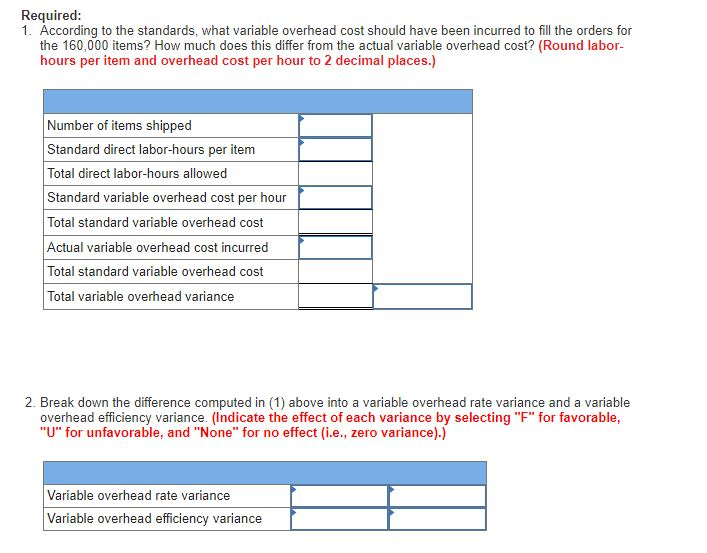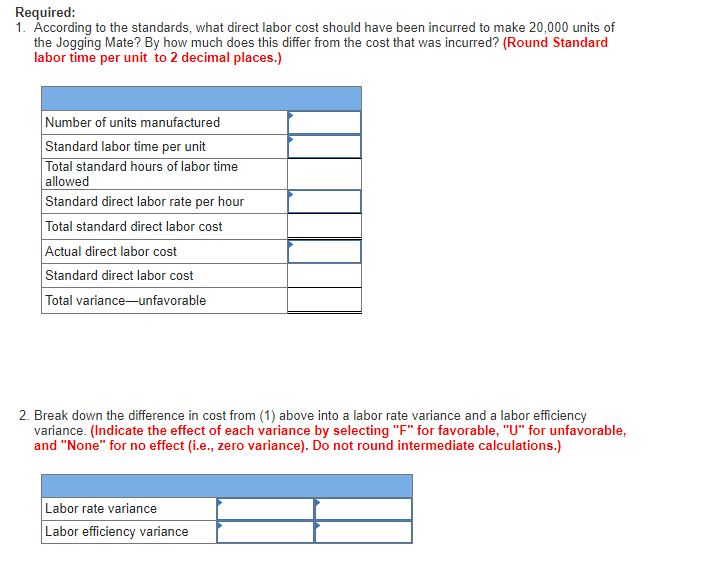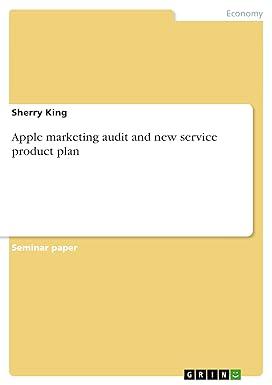Question
3. Logistics Solutions provides order fulfillment services for dot.com merchants. The company maintains warehouses that stock items carried by its dot.com clients. When a client
| 3. Logistics Solutions provides order fulfillment services for dot.com merchants. The company maintains warehouses that stock items carried by its dot.com clients. When a client receives an order from a customer, the order is forwarded to Logistics Solutions, which pulls the item from storage, packs it, and ships it to the customer. The company uses a predetermined variable overhead rate based on direct labor-hours. |
| In the most recent month, 160,000 items were shipped to customers using 6,500 direct labor-hours. The company incurred a total of $20,800 in variable overhead costs. |
| According to the companys standards, 0.03 direct labor-hours are required to fulfill an order for one item and the variable overhead rate is $3.25 per direct labor-hour. |
| Required: | ||||||||||||||||||
| 1. | According to the standards, what variable overhead cost should have been incurred to fill the orders for the 160,000 items? How much does this differ from the actual variable overhead cost? (Round labor-hours per item and overhead cost per hour to 2 decimal places.)
4.
| |||||||||||||||||
Step by Step Solution
There are 3 Steps involved in it
Step: 1

Get Instant Access to Expert-Tailored Solutions
See step-by-step solutions with expert insights and AI powered tools for academic success
Step: 2

Step: 3

Ace Your Homework with AI
Get the answers you need in no time with our AI-driven, step-by-step assistance
Get Started





